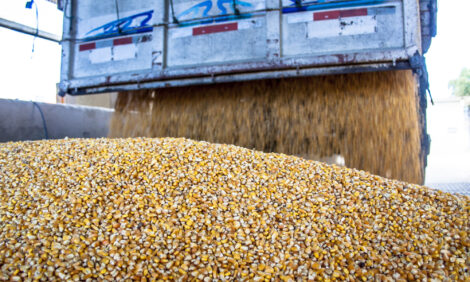



USDA Reports on Climate Change Effects, Adaptation Strategies
US - The US Department of Agriculture (USDA) released two comprehensive reports today that synthesize the scientific literature on climate change effects and adaptation strategies for US agriculture and forests.The reports, entitled Climate Change
and Agriculture: Effects and Adaptation and the Effects of Climate Variability and Change on
Forest Ecosystems: A Comprehensive Science Synthesis for the US Forest Sector, were created
as inputs to the National Climate Assessment. Scientists from the federal service, universities,
non-governmental organizations, industry, tribal lands and the private sector contributed to the
peer-reviewed studies.
"These reports present the challenges that US agriculture and forests will face in this century
from global climate change," said William Hohenstein, Director of the Climate Change Program
Office in USDA’s Office of the Chief Economist. "They give us a framework for understanding
the implications of climate change, in order to meet our future demands for food, feed, fiber, and
fuel."
The reports indicate how climate change is affecting US farms, forests, grasslands, and rural
communities. While US agriculture and resource management have long histories of successful
adaptation to climate variability, the accelerating pace and intensity of climate change presents
new challenges to be addressed, as highlighted in the reports.
For example, the agricultural report indicates increases in atmospheric carbon dioxide, rising
temperatures, and altered precipitation patterns will affect agricultural productivity. Climate
change will exacerbate the stresses already occurring from weeds, insects, and disease. Increases
in the incidence of extreme weather events will have an increasing influence on agricultural
productivity. Over the next 25 years, the effects of climate change on agricultural production
and economic outcomes for both producers and consumers in the United States are expected to
be mixed, depending on regional conditions. Beyond 2050, changes are expected to include
shifts in crop production areas, increases in pest control expenses, and greater disease
prevalence.
The forest sector report indicates that the most rapidly visible and significant short-term effects
on forest ecosystems will be caused by fire, insects, invasive species, and combinations of
multiple stressors. Wildfire is expected to increase throughout the United States, causing at least
a doubling of area burned by the mid-21st century.
"This report strengthens our resolve to aggressively continue treating and restoring our nation's
forests to reduce future fire impacts," said US Forest Service Chief Tom Tidwell. "Recent fires
in Colorado and other areas throughout the country serve as a grim portent for what we expect to
see more of in the future. I'm confident that we have a strong plan in place to keep pace with the
impacts a changing climate will have on our forests and grasslands."
Although some regions will be affected more than others, these disturbances are likely to change
the structure and function of ecosystems across millions of acres over a short period of time with
detrimental effects on forest resources. Anticipated effects include increased tree mortality,
changes in species assemblages, and reduced water quality.
The reports also explore the potential for adaptive practices to reduce the negative effects of
climate change and to potentially take advantage of new opportunities in the forestry and
agriculture sectors. Successful adaptation will require research to identify management practices
that enhance the resilience of these systems to climate change effects, develops stress-tolerant
plant and animal varieties, and establishes new approaches to conserve soil and water resources.







